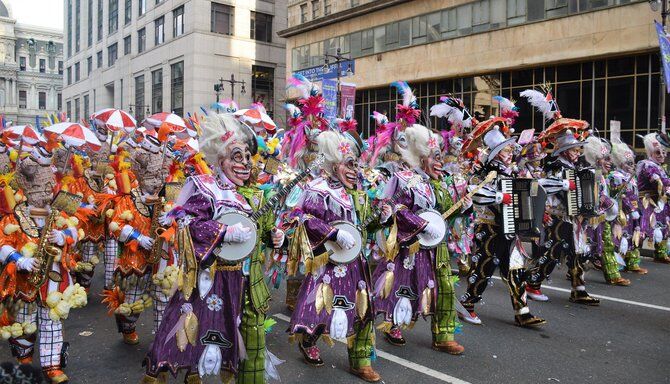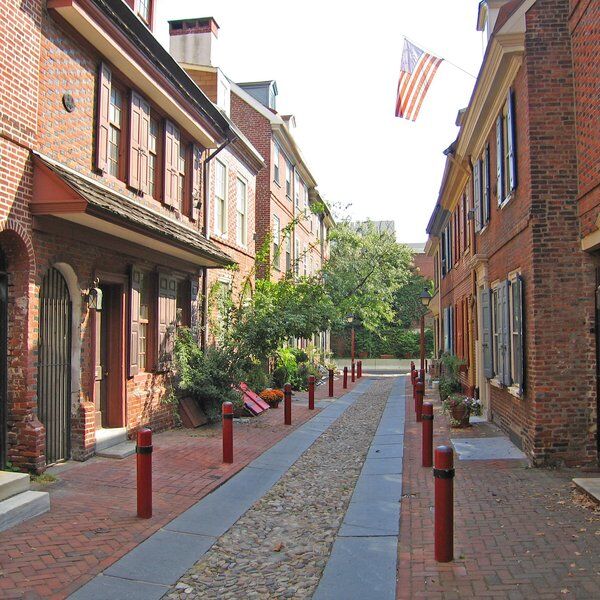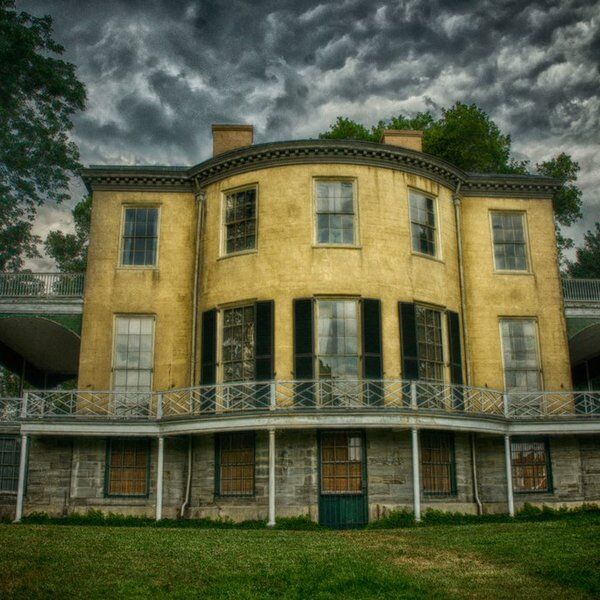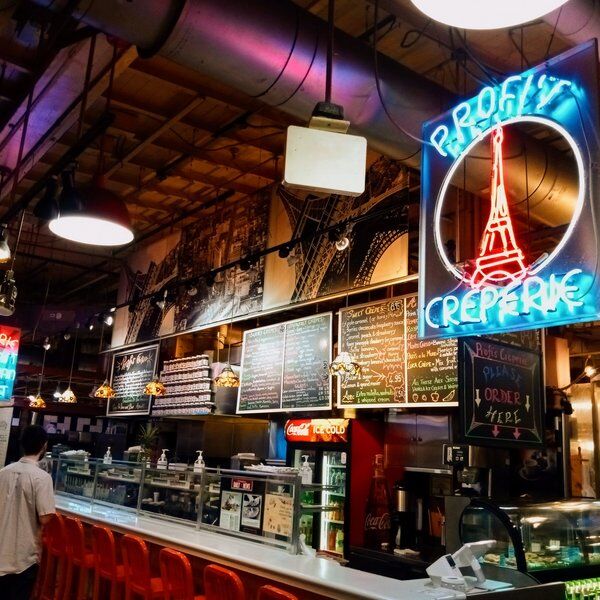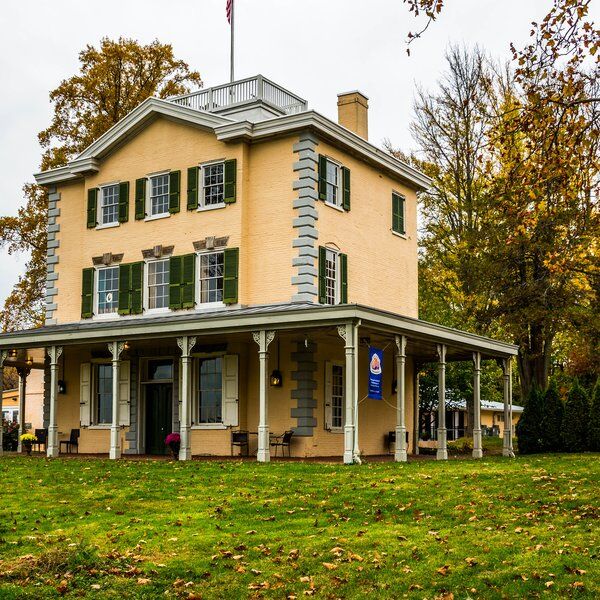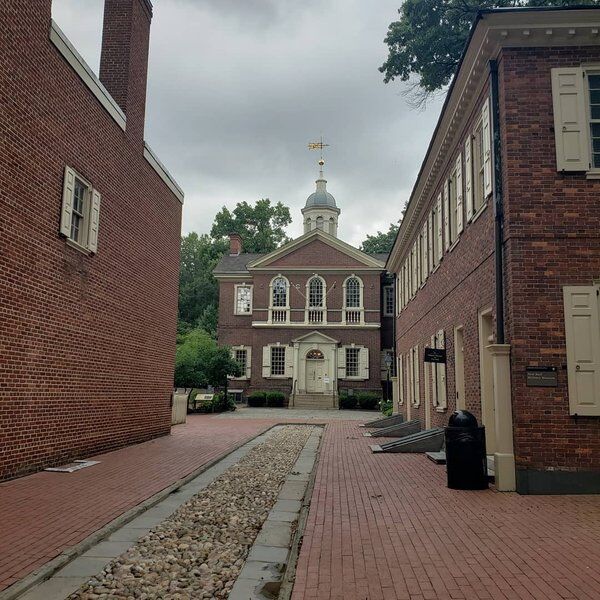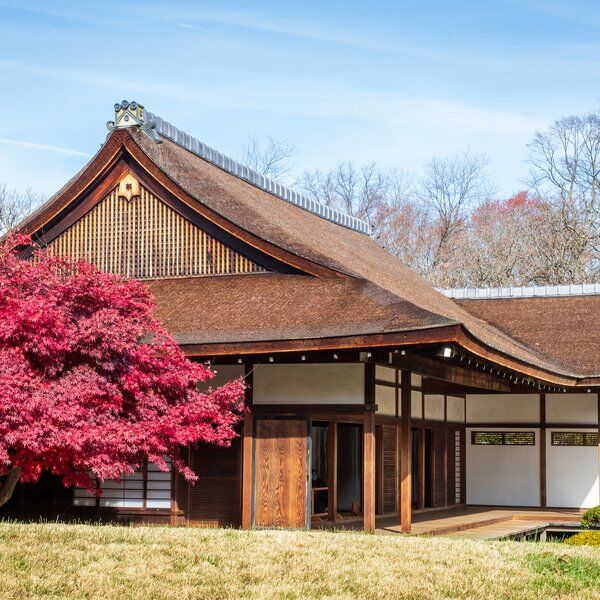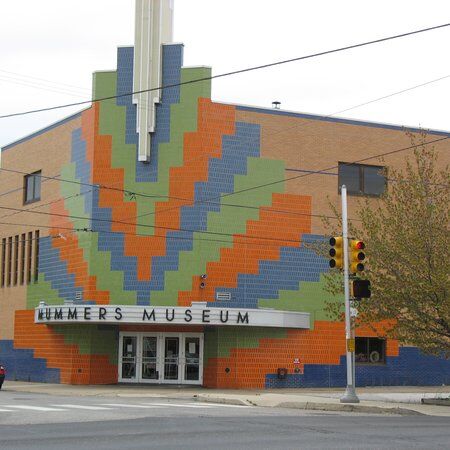
Discovering Philadelphia's Mummers Museum
The Mummers Museum in Philadelphia celebrates the annual New Year’s Day Mummers Parade, known as the oldest continuous folk parade in the United States. While the first formal, city-sponsored parade was held in 1901, the tradition of "mummery" in Philadelphia began long before. Mummers existed in ancient civilizations such as Egypt and Greece and have influenced European traditions like the Feast of Saturnalia, the British Mummer Play, and the Florentine Carnival.
As the only mummers museum in the world, the institution offers a rare opportunity to see the transformation of everyday individuals into sparkling, strutting performers. Visitors can explore exhibits with uniforms, songs, and memorabilia of the past on display to get them in the mood for the next New Year's Day parade. The uniforms on show highlight the whimsical nature of the Comics, the dazzling sequin-festooned attire of the String Bands, and the elaborate feathered constructions of the Brigades and Fancy Division. Interactive displays allow visitors to compose their own Mummers medley and learn the iconic Mummers Strut, while highlights from past parades are shown on a large screen.
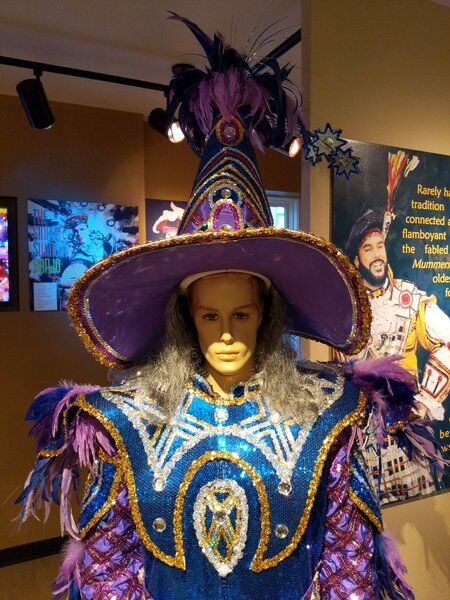
What are Mummers?
“Mummers are about celebration, fun, and family. They value tradition and community. Mummers can be musical, satirical, or even a little ridiculous, but they are always colourful.”
In Philadelphia, Mummers are costumed citizens who ring in the New Year with their families and friends. They belong to clubs across five different divisions: the Comic, the Fancy, the Wench Brigade, the String Band, and the Fancy Brigade. This festive tradition culminates in the annual Mummers Parade. With thousands of participants and hundreds of thousands of spectators lining the streets or tuning in via television, this event is a spectacle of fun, joy, tradition, and creativity. Occupations such as longshoremen and firefighters have historically been linked to Mummery, reflecting its working-class origins.
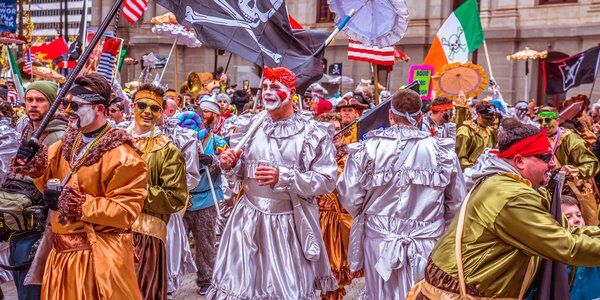
The History of Mummery
The term "Mummer" can be traced back to Greek mythology, where Momus represented satire and mockery. Historically, Mummery involved masked performers engaging in various types of folk plays, characterised by elaborate disguises and rowdy performances. These traditions spread throughout Europe, evolving differently in each region. For instance, feast mummers entertained at banquets, and the Newfoundland Mummers put on raucous performances and demanded booze.
"Here we stand before your door, as we stood the year before; give us whisky, give us gin, open the door and let us in."
In the late 1600s, European settlers, particularly Swedes but also British, Irish, German, Italian, Polish, and Roman Catholic communities, brought their mummery traditions to Philadelphia, particularly neighbourhoods like Pennsport and Whitman. Known for "shooting in" the New Year, these New Year’s Shooters and Mummers would travel around singing and performing skits or poems—often mocking the ruling class—in exchange for food and drink. This practice, a precursor to Christmas carolling, retained its rowdy and festive nature in Philadelphia even as it evolved elsewhere.
It wasn’t long before Philadelphia’s mummery had grown into a significant event, with paraders in comic and fancy dress transforming the streets into one great big masked ball. Despite periods of controversy and even a ban on masquerading in the 1800s, the tradition continues to persist and evolve.
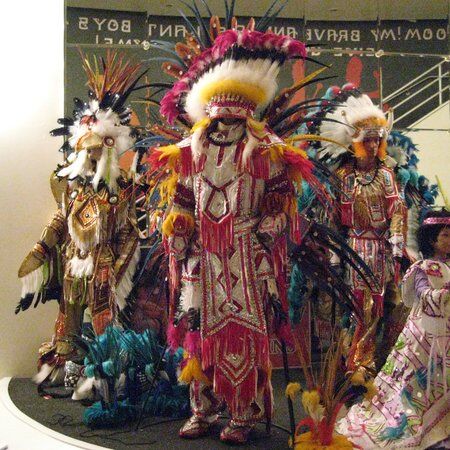
The Mummers Parade
The Mummers Parade, officially starting on New Year’s Day 1901, has grown into an elaborate affair involving 10,000 participants from various clubs—including the Wench, Comic, Fancy, String Band, and Fancy Brigade divisions. Many participants are working-class Philadelphians who spare no expense on their costumes and props, with some brigades spending up to $100,000 on a single show.
The earliest Mummers were Comics and Fancies, donning funny and fancy costumes. Over time, different divisions such as the Wench Brigade, String Bands, and Fancy Brigades emerged, each contributing something different to the parade. The bands, which date back to the late 1800s, use elaborate props and choreography. The Fancy Brigades, formed from the Fancy Division, deliver energetic, Broadway-like performances. And the Wench Brigades still wear traditional dress.
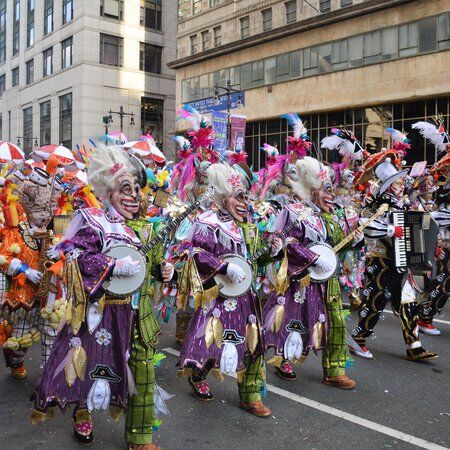
The Mummers Parade has faced its share of controversies, particularly concerning issues of race and representation. Despite this, the tradition has also incorporated elements of African American culture, such as the parade’s theme song "Oh! Dem Golden Slippers," composed by African American songwriter James Bland, and the Mummers' signature "strut," which traces back to the 19th-century Cakewalk.
While the New Year's Day parade is the most publicised event, Mummers are active throughout the year, engaging in community events, entertaining the sick and elderly, and raising funds for charity. The Mummers Museum highlights these contributions, emphasising the Mummers' role as goodwill ambassadors.
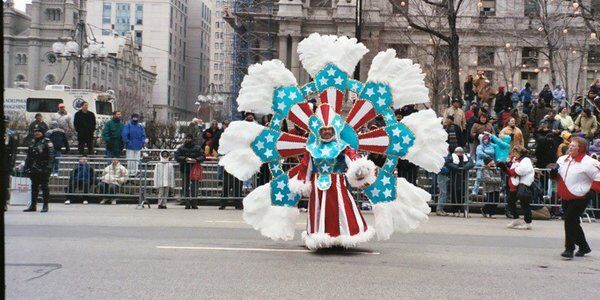
Visiting the Mummers Museum
The Mummers Museum was officially opened in 1976. Inside, visitors can explore an array of costumes, oral histories, video and audio archives, and even an exhibit that teaches the iconic "strut." Exploring the Mummers Museum also offers an in-depth look into the different divisions of Mummery. They are as follows:
The Comic Division
The Comic Division is the original and arguably the most important part of Mummery, tracing its roots back to the Ancient World, the Middle Ages, and Colonial America. Known for their satire and light-hearted fun, Comics bring a touch of humour to the parade, poking fun at current events, sports, politics, and even Mummery itself. Historically, there were six Comic Clubs, but today, the Goodtimers, Landi, and Murray Comic Clubs lead the way, sponsoring thousands of participants.
Participants in the Comic Division span all ages, from newborns to seniors in their eighties. They spend months crafting their own costumes and props, striving for excellence in categories such as Captain, Brigades, Groups, Best Couple, Original Costume, Original Character, and Juvenile. Despite their playful nature, the competition among the Comic Clubs is fierce.
The Fancy Division
The Fancy Division has been a staple of the Mummers Parade since its inception in 1901. It once consisted of four competing mother clubs but today, there is only one, Golden Sunrise, first parading in 1960.
True to its name, the Fancy Division has vibrant, fancy costumes and elaborate back pieces, making it a highlight division in the annual parade. Each year, around 60 individual entries per club participate in the division’s categories. These include King Clown, King Jockey, Handsome Trim, Captain, Trio Pantomime Clowns, Fancy Trio, Handsome Costume, and Juvenile.
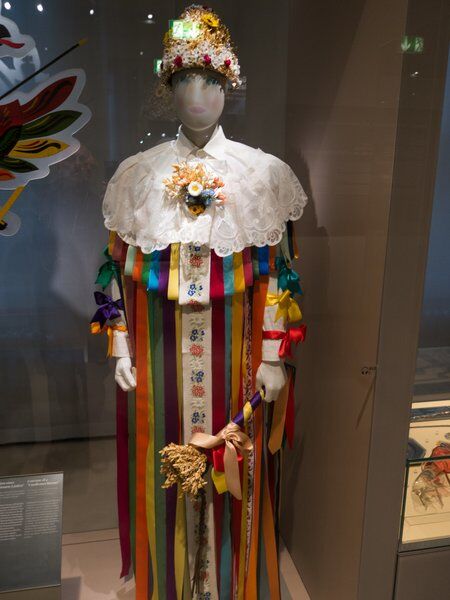
The Wench Brigade Division
The Wench Brigade Division are the youngest of the Mummers Parade divisions, debuting in 2003 and yet they maintain the traditions of dress and bloomers, parasols, and the iconic Golden Slippers, a global symbol of mummery. Their lively brass band performances and energetic displays make them a crowd favourite on Broad Street.
Chief clubs within the Wench Brigade Division include Bryson, Cara Liom, Froggy Carr, O’Malley, Oregon, Pirates, Riverfront, JHJ Saints, and the Americans. They evolved from the Comic Division and feature between 150 and 1500 members each.
The String Band Division
The String Band Division is renowned for its music and elaborate costumes. They use banjos, mandolins, violins, accordions, saxophones, bass fiddles, drums, and the glockenspiel. The first String Band participated as a novelty in the 1901 parade, but from here the division grew, officially forming in 1915.
String Bands are known for their elaborate four-and-a-half-minute performances, which combine intricate props, scenery, and Broadway-style choreography. Their dedication is evident as members meet weekly year-round to perfect their music and routines so that they can put on the best performances for their fans.
The Fancy Brigade Division
Formed in the early 1940s and officially named in 1947, the Fancy Brigade Division initially paraded as part of the Fancy Division. However, in 1978, they became their own division, parading last in the lineup. The Fancy Brigades have since moved their performances indoors to the Pennsylvania Convention Center in 1998. This shift guaranteed Mummers performances on New Year’s Day, drawing sellout crowds for their spectacular shows.
Fancy Brigades have a competitive spirit. They present mini Broadway-style shows with massive props, scenery, and choreography. Their performances are judged, and the winner is awarded the Jim Julia Cup.

Discover More of Philadelphia with CityDays
Discover Philadelphia’s secret sites and noteworthy nooks by playing one of our Philadelphia treasure and scavenger hunts.
You’ll find curated trails and hunts all over Philadelphia. All you have to do is team up with your friends, family or whoever to solve riddles, complete challenges and answer trivia to lead you on an unforgettable journey around Philadelphia's most intriguing streets.
The best part? We’ll recommend top-rated bars, cafés and restaurants and give your team the chance to earn rewards by competing on our leaderboard.
CityDays gives you total freedom to start and finish whenever you like, take extra breaks if you want or need them, and it’s suitable for people of all ages.
